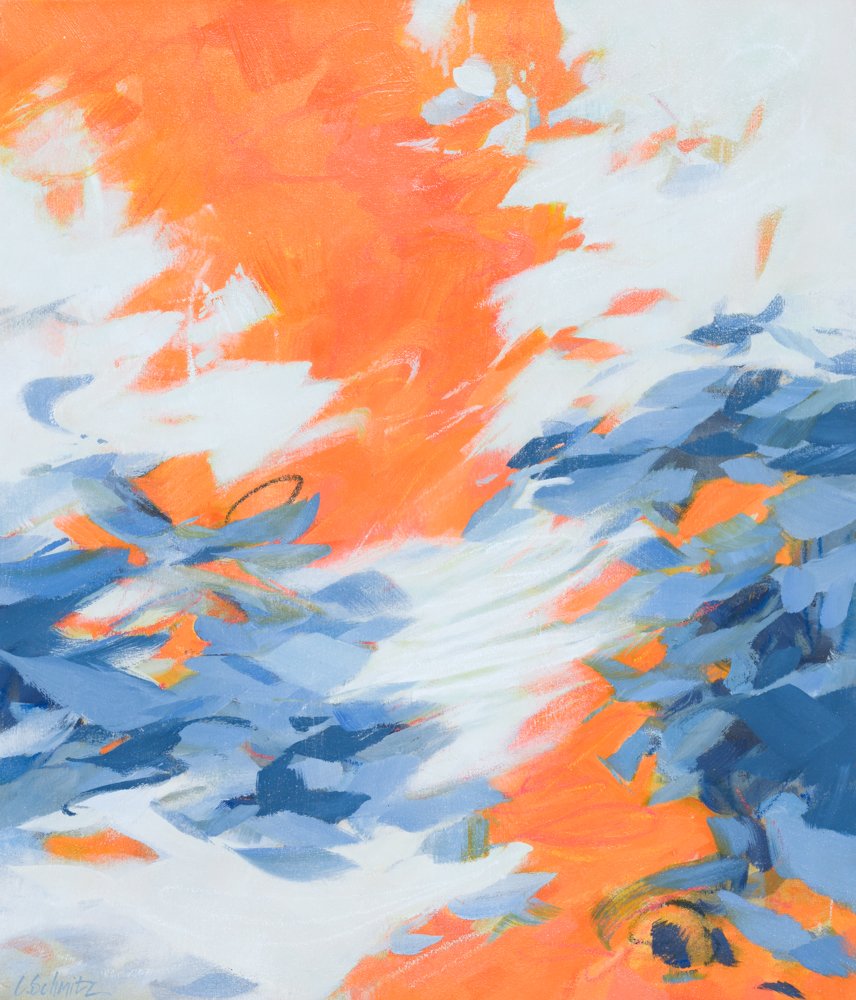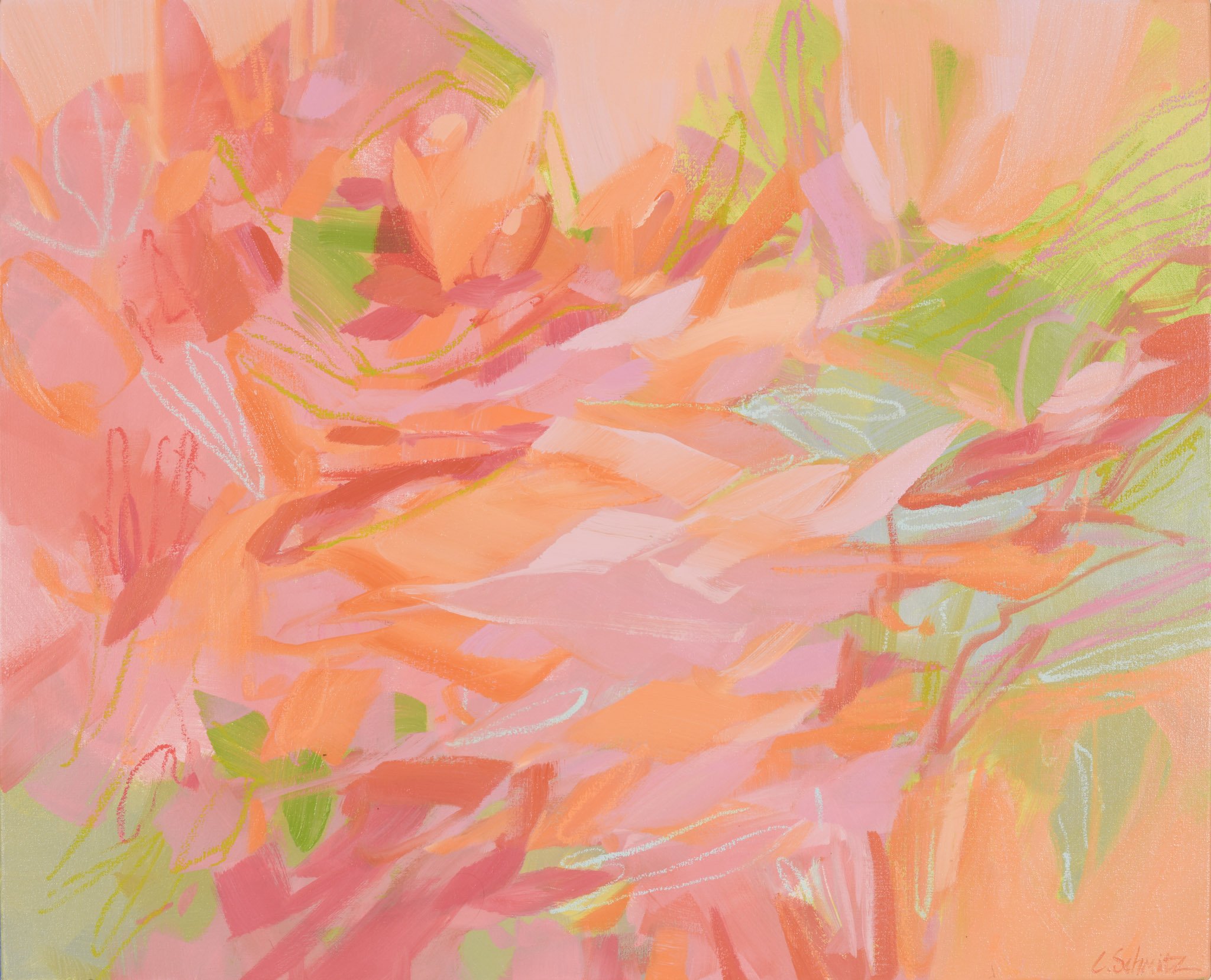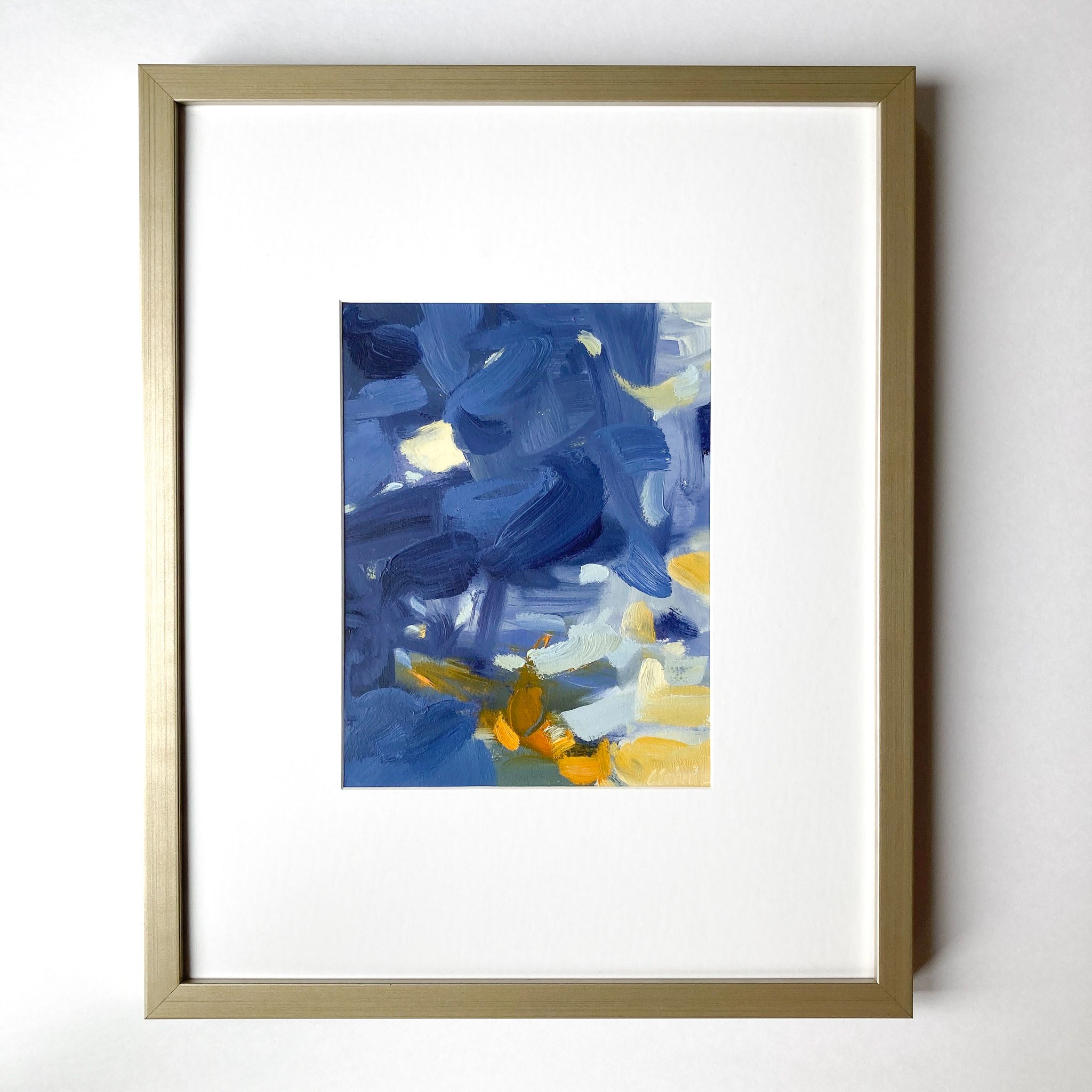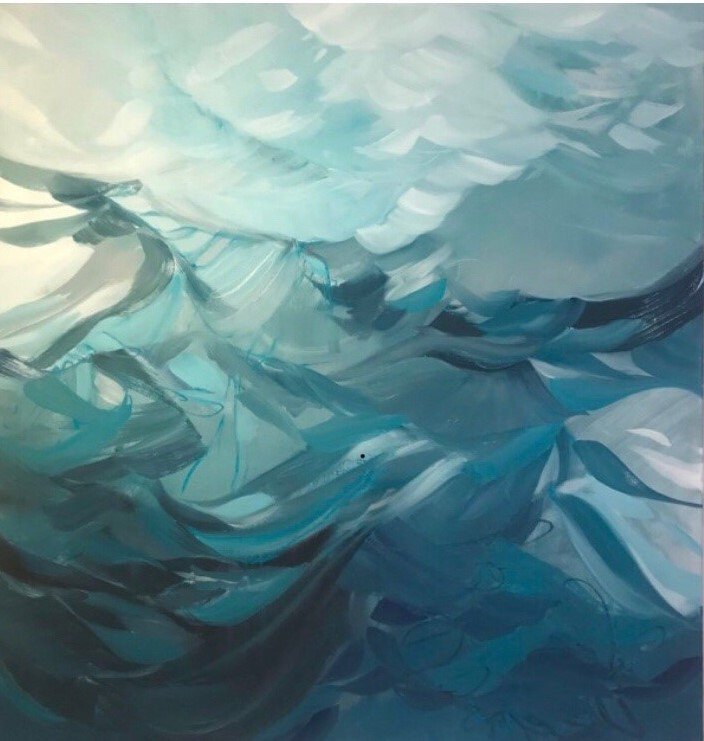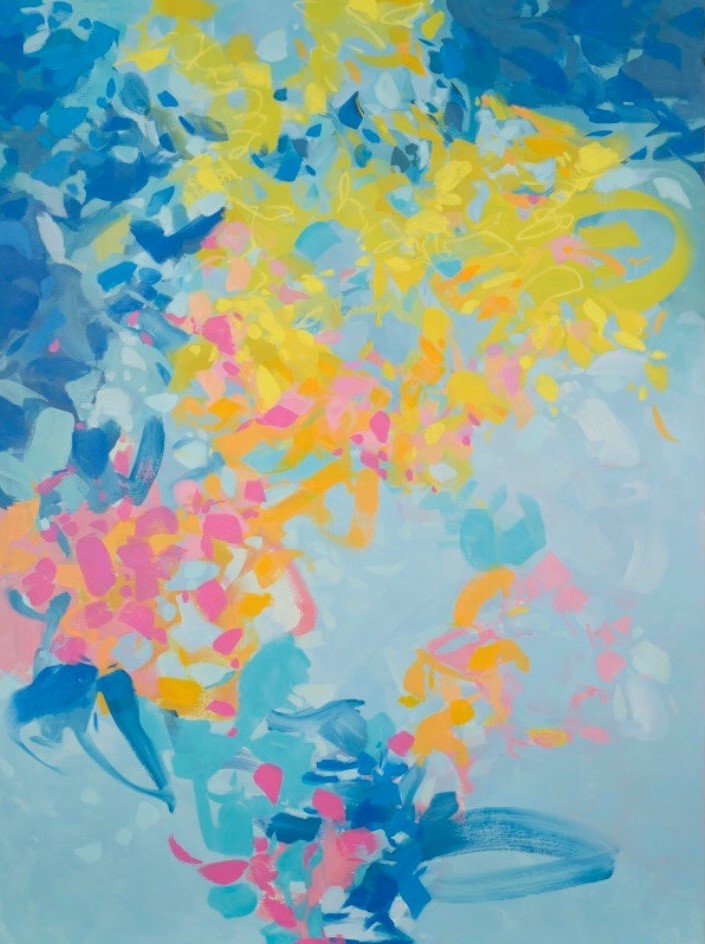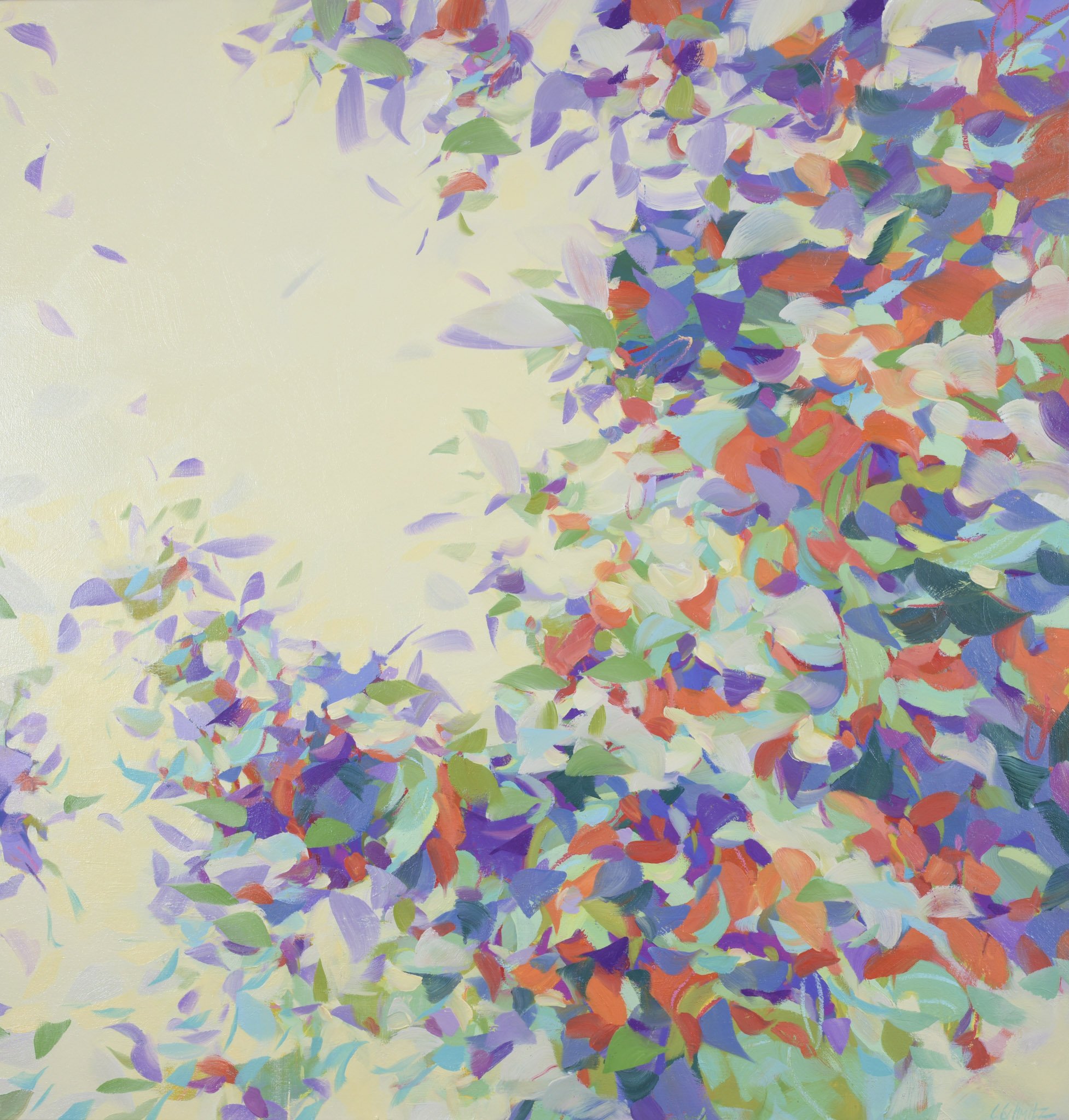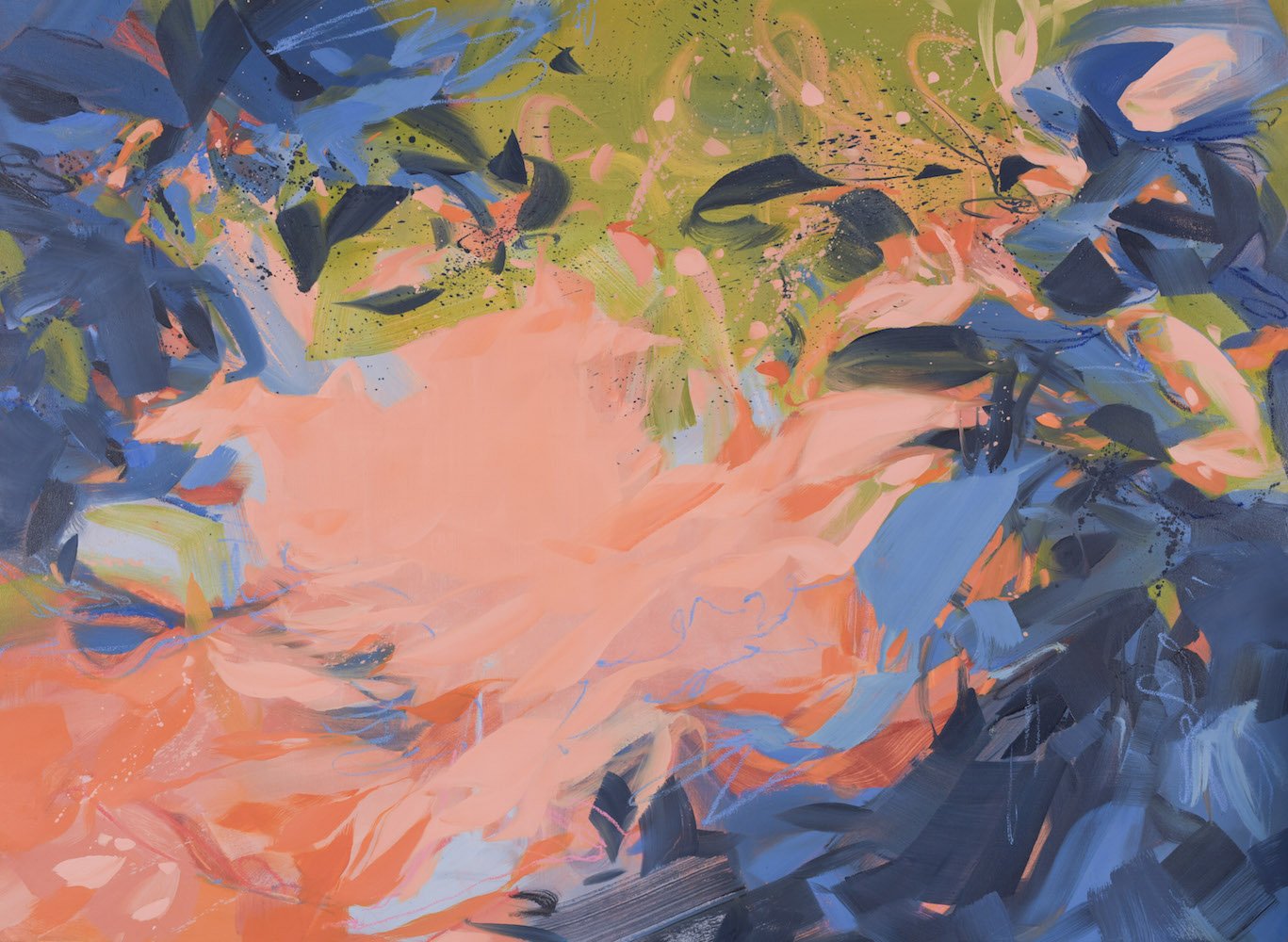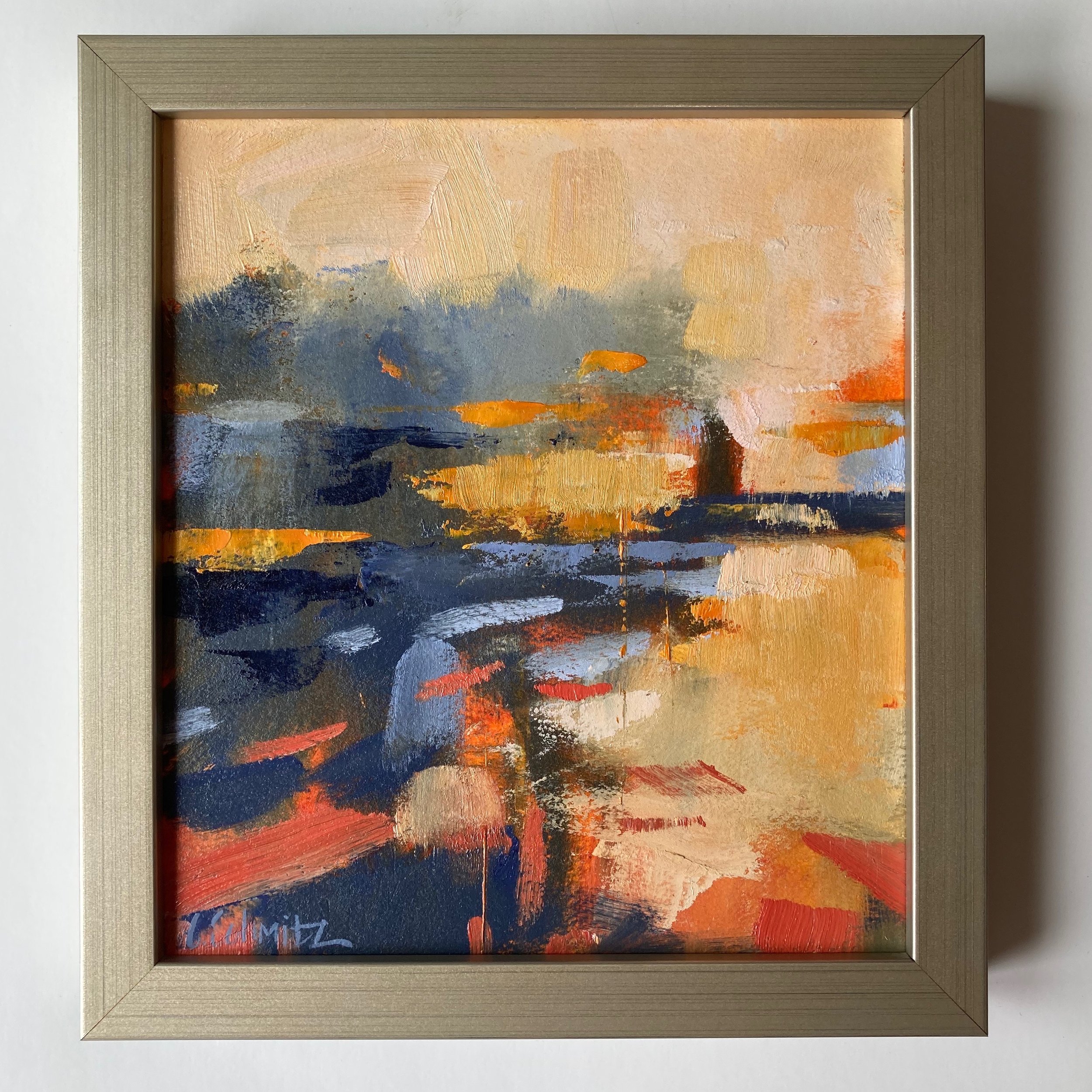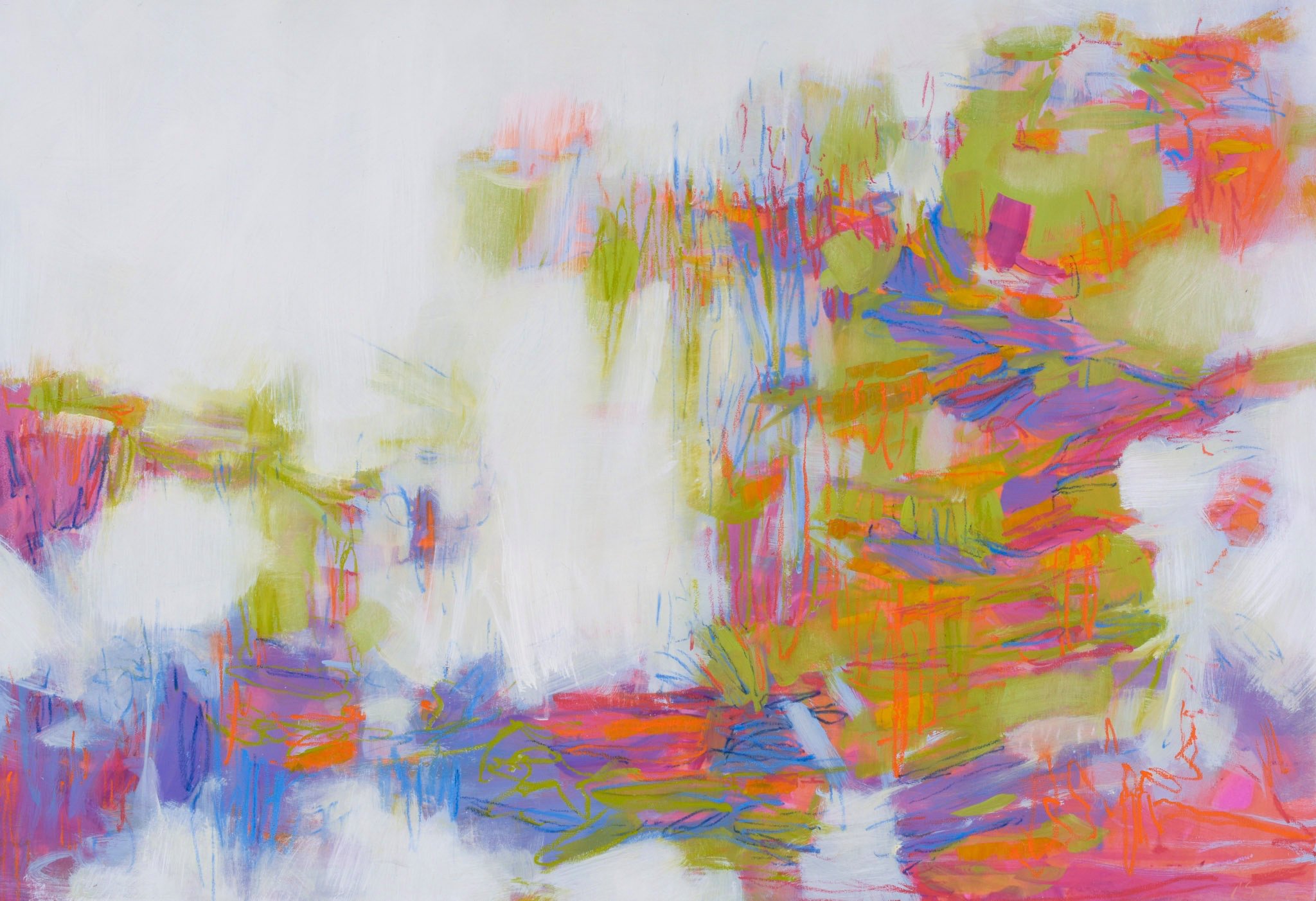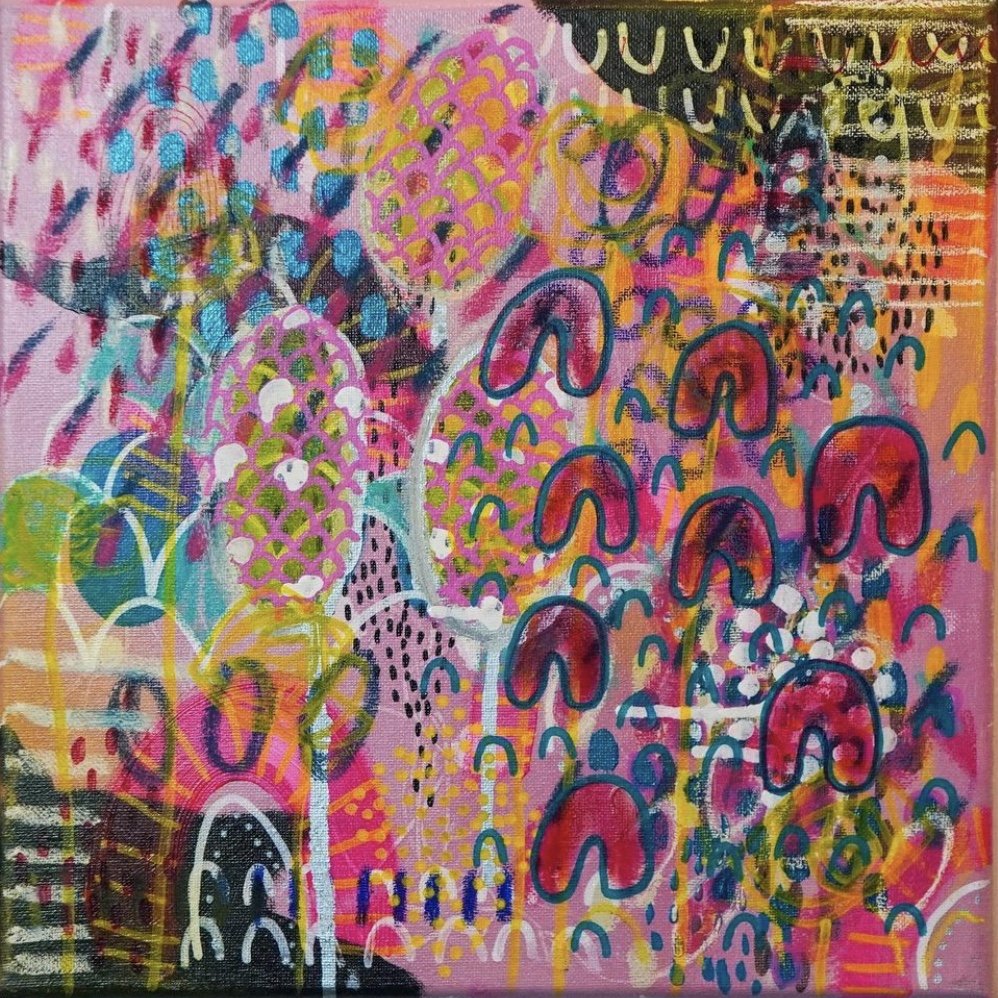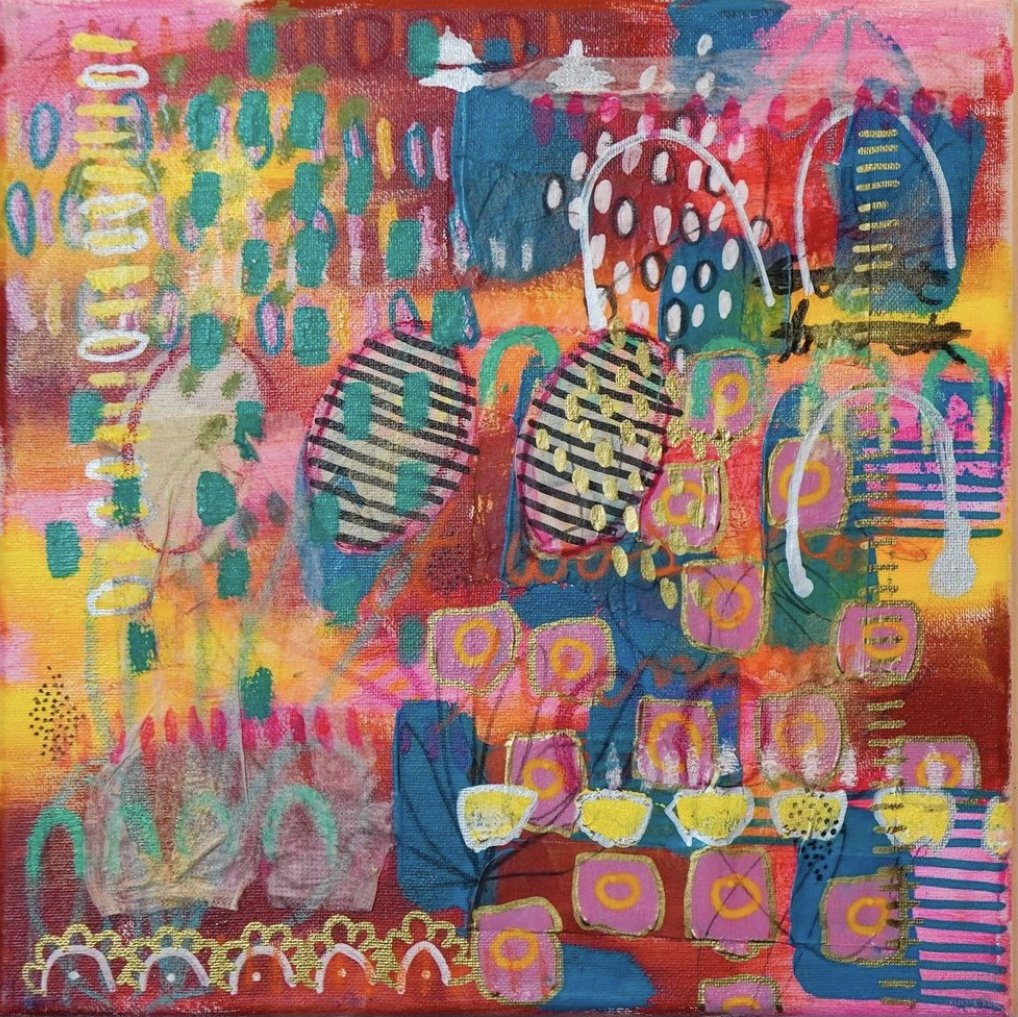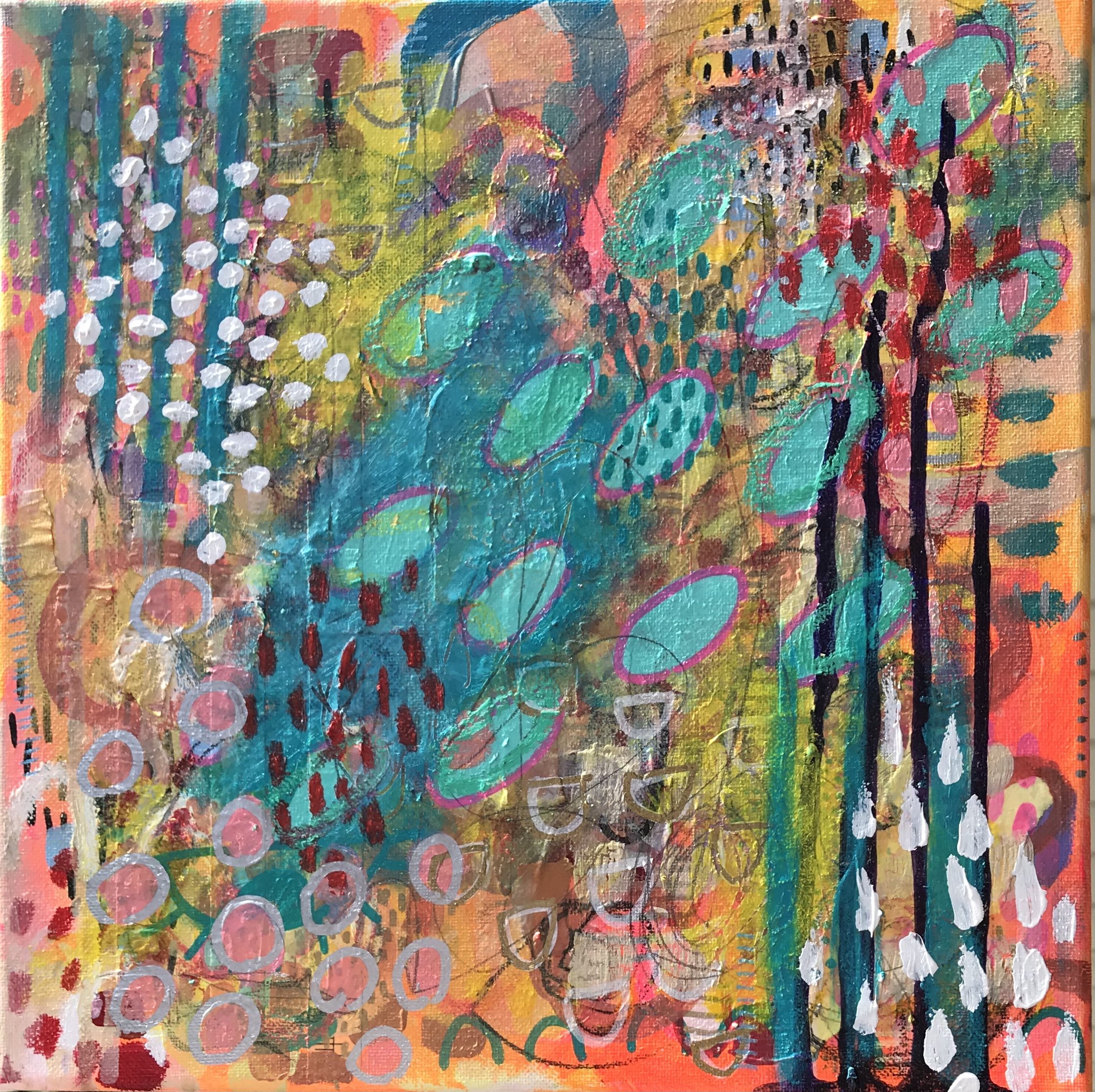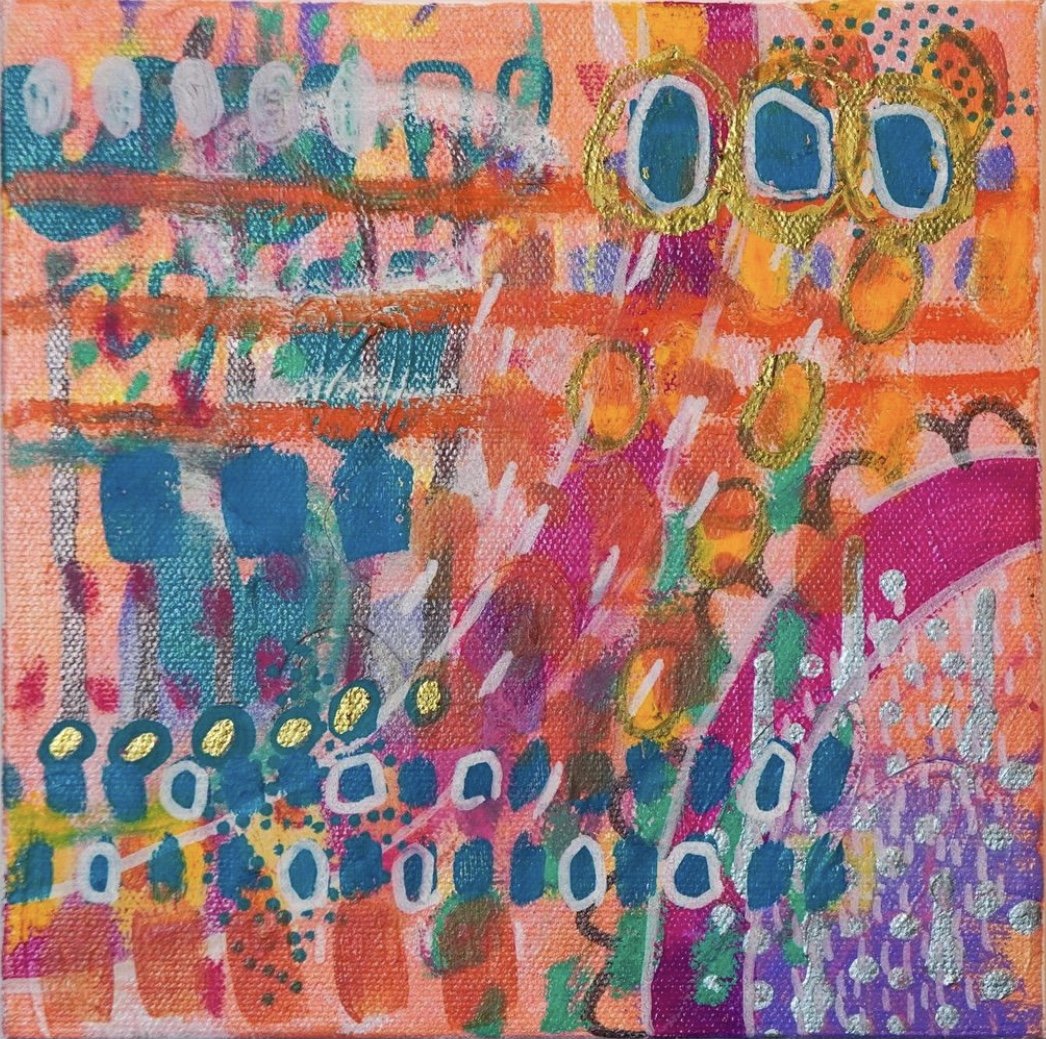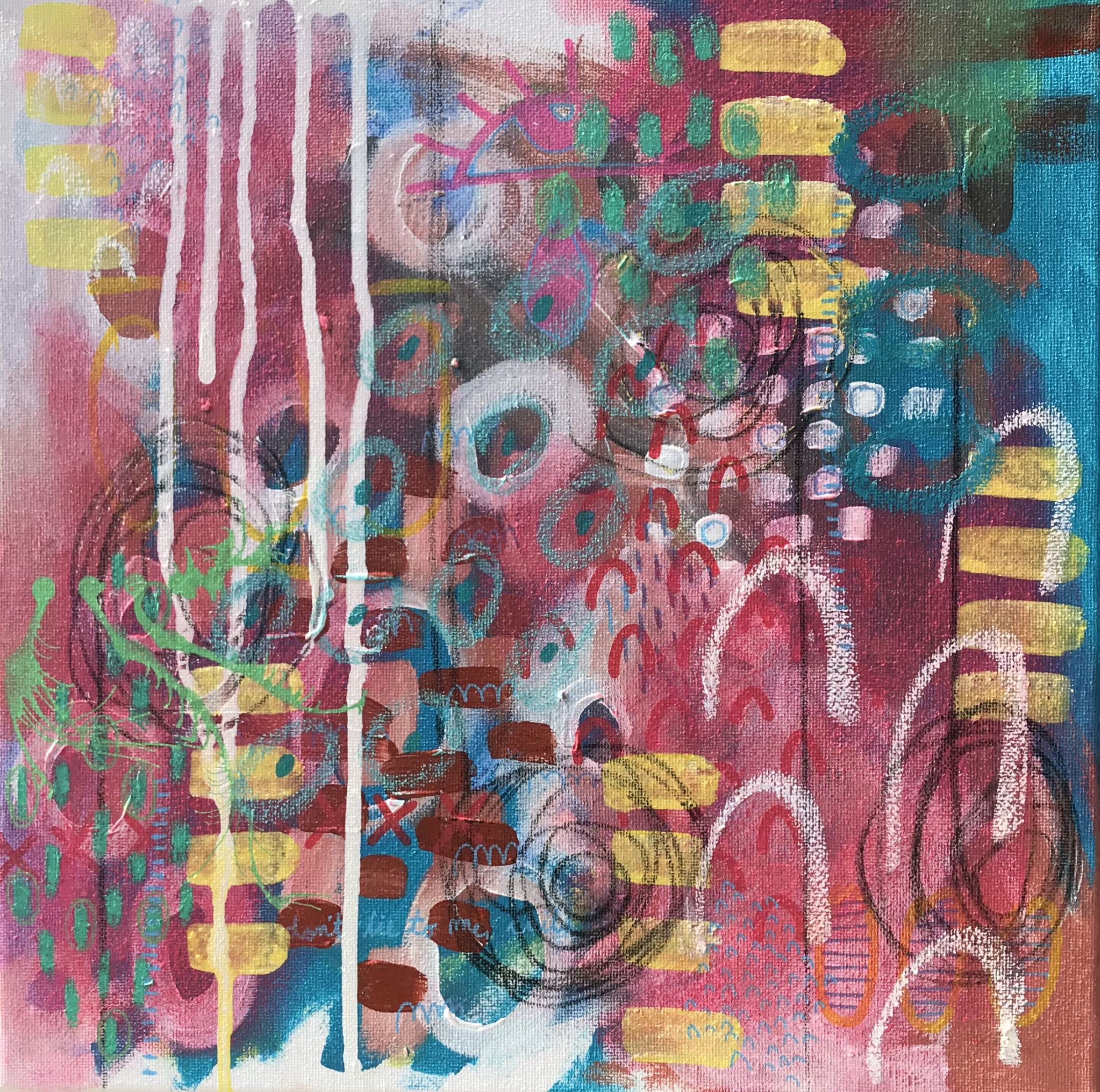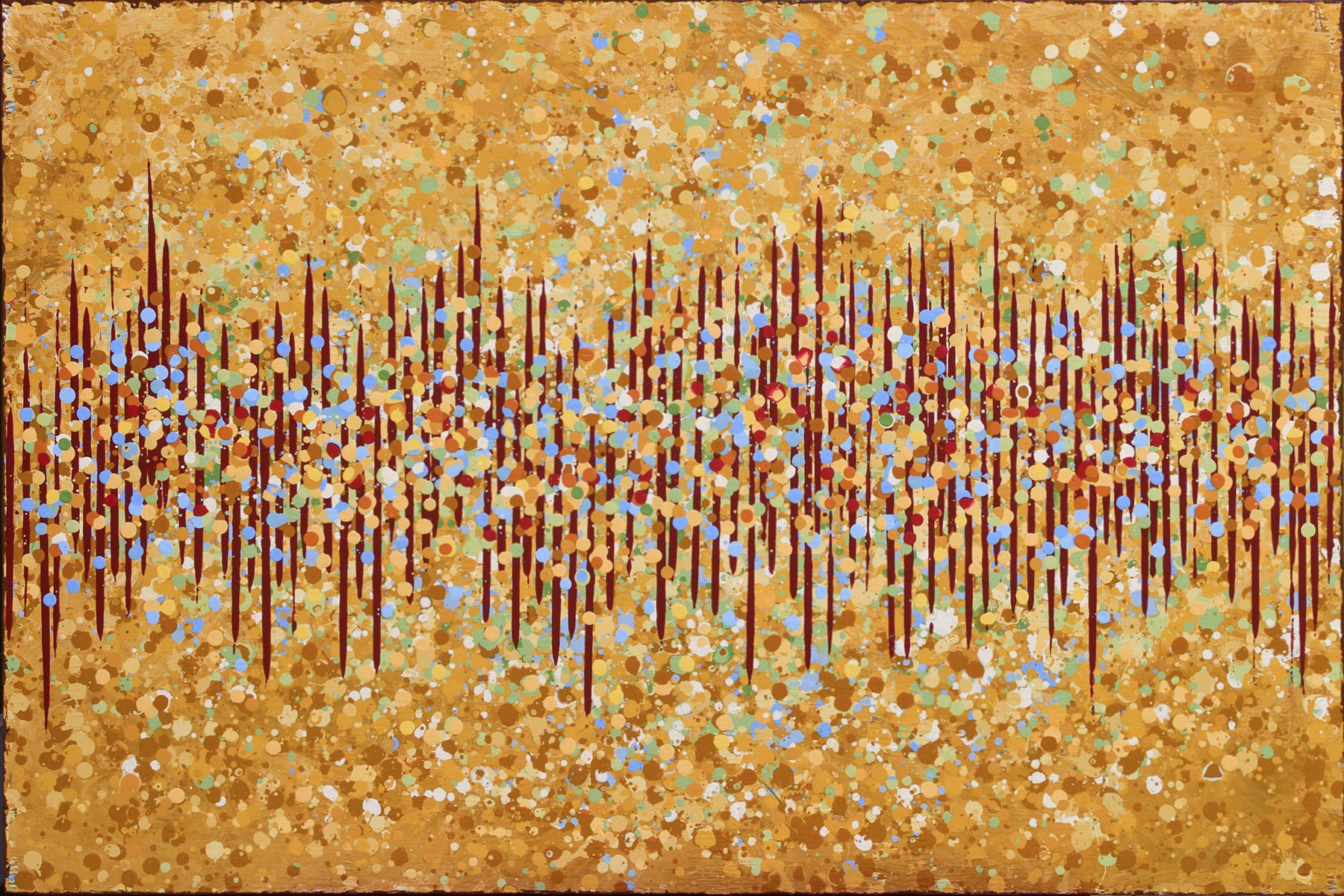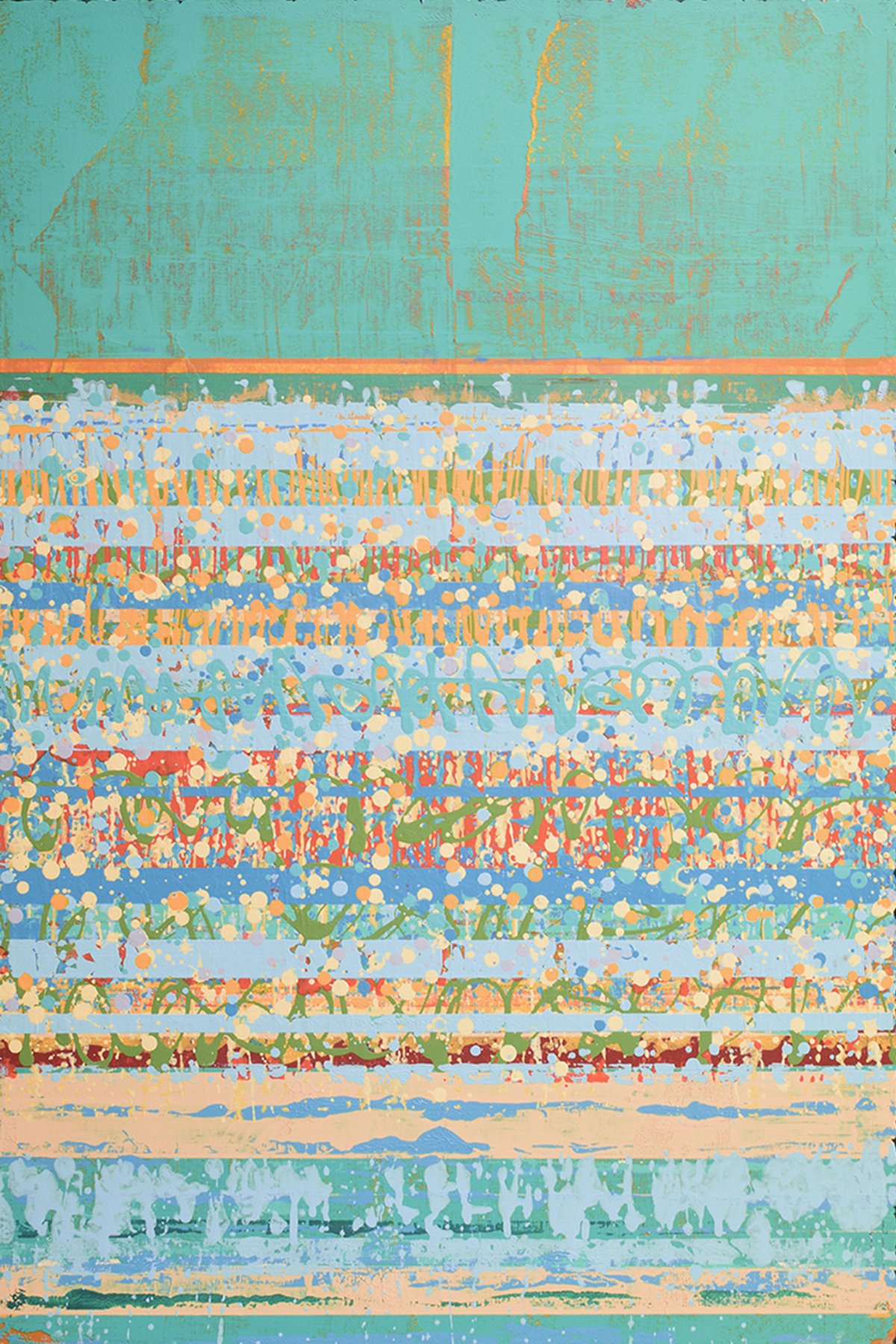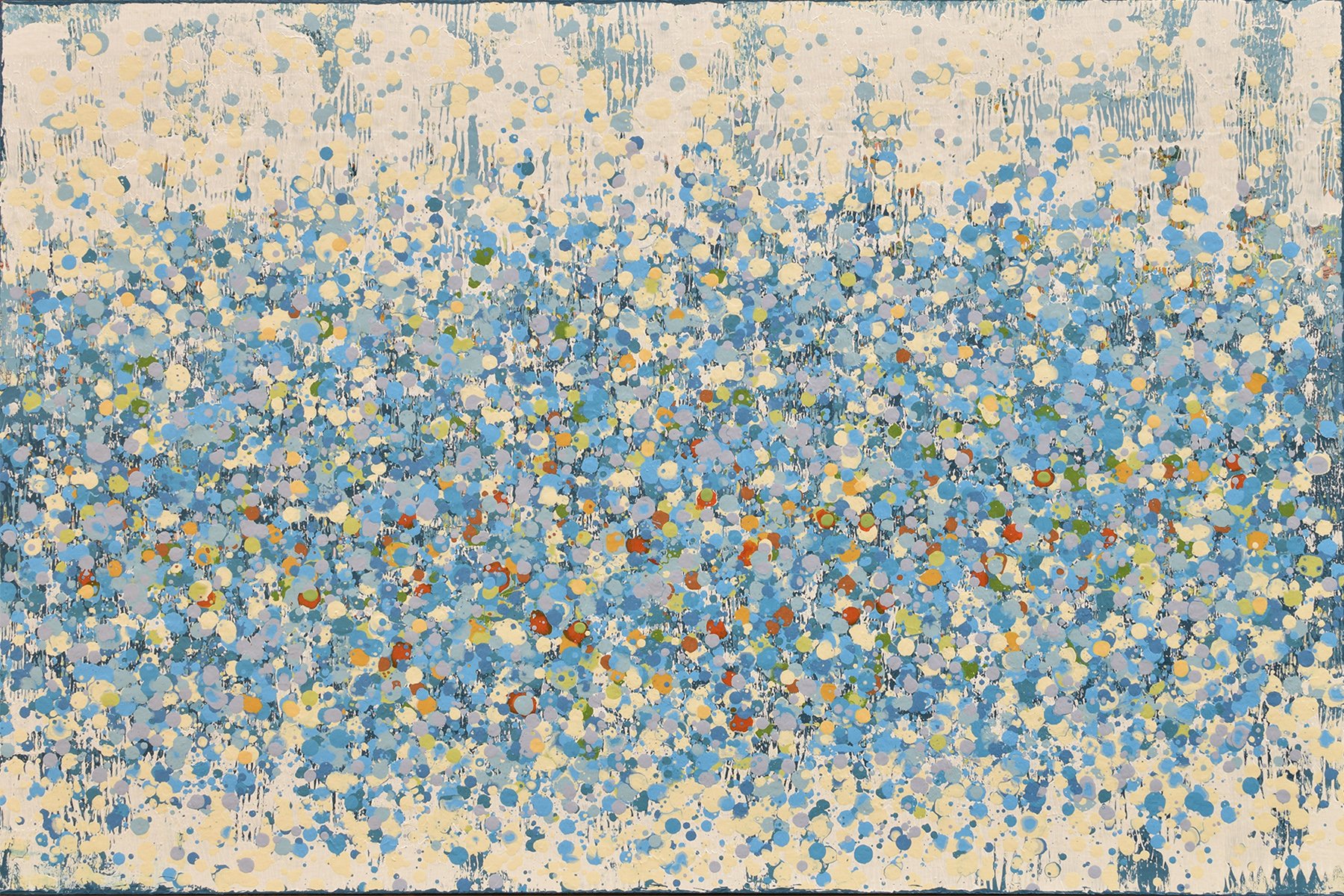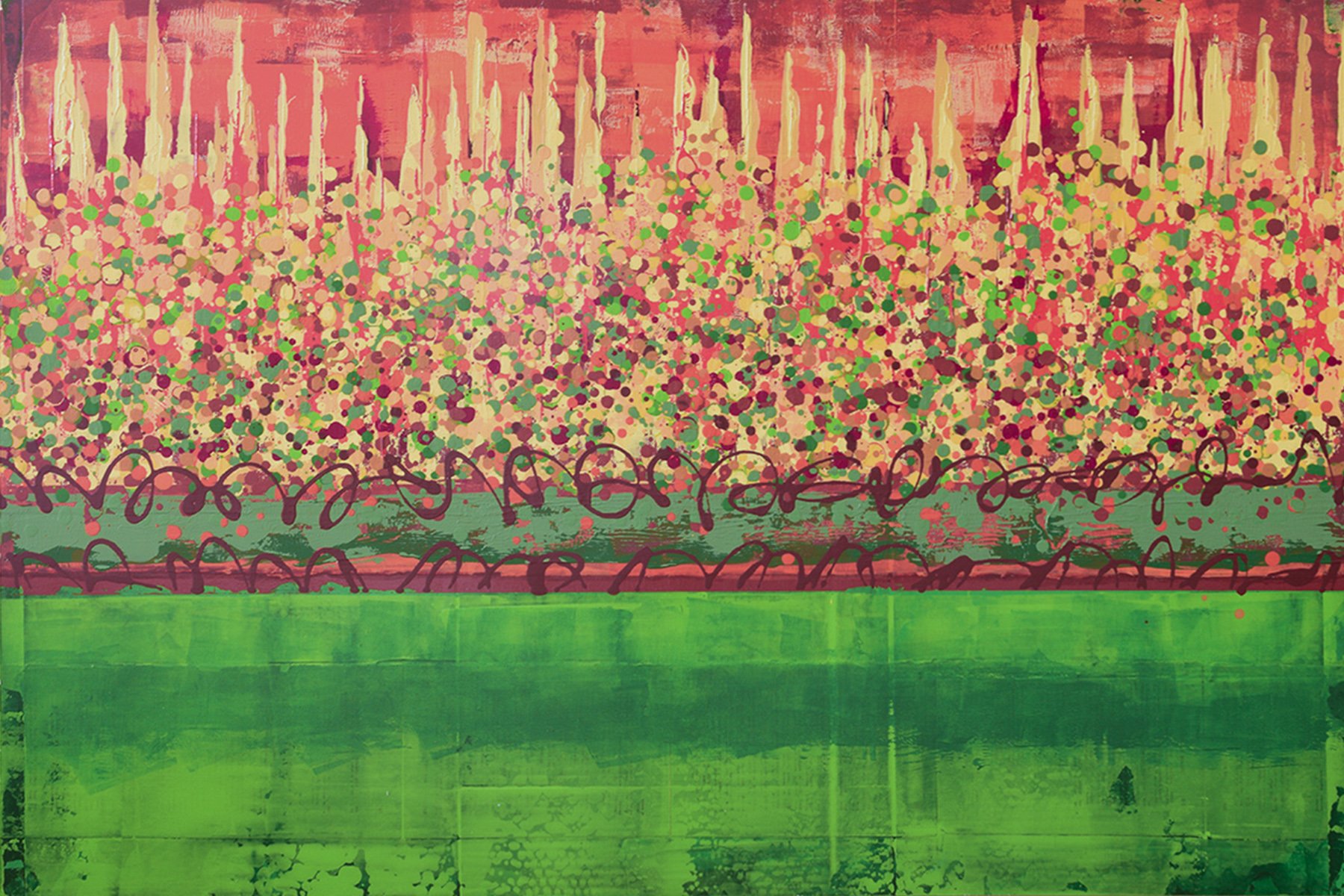Action/ Reaction
A Group Intuitive Painting Exhibition
Cameron Schmitz, Jessica Hughes, and Matt Larson
Boreale II, Matt Larson, 36 x 24
Folley Hall & Copley Studio Galleries
July 21st - October 28th, 2022
Each artist develops their own individual artistic language: a vocabulary of brushstrokes, a familiar shorthand of color choices, shapes, and spaces that speak a specific dialect. In abstract painting, the action of the artist’s body in motion becomes gestures in the painting. It is only through experimentation that an artist discovers how to capture their personal experience and translate it into something visual.
When approaching abstract art, the viewer is challenged to disengage from a search for meaning and instead focus on their physical reactions and emotions that arise when gazing. As humans who search for meaning, we often seek to understand the artist’s original intent. However, rather than placing images upon a field or finding shapes that create a narrative, we are encouraged to sit with the work without a story in our mind to explain what we’re seeing.
Engage with your senses. Notice the emotions that resonate. In the same way that the artist develops their own expression, each viewer is invited to cultivate their own reaction. And perhaps that reaction is a motivation to experiment yourself.
Exhibition Reception and Artist Talk
Thursday, August 4th
5:30 to 7:30pm
Works by Cameron Schmitz
Cameron Schmitz (she/her) moved to Vermont after a residency at the Vermont Studio Center in 2006. She received her MFA in Painting from the Pennsylvania Academy of Fine Arts and has exhibited her paintings internationally.
I use mark-making to express the constantly moving, changing, and morphing of life and nature, leaving observers certain that they are witnessing merely a fleeting moment in time. I am fascinated by the imagery that emerges from the physical and emotive act of painting itself—dashes of paint, gestural strokes, and rhythmic painterly marks are representative of human touch, personal exchange, energy, and the shifting of time.
Painting is a metaphor for my perception of life, inspired by the tender relationships in my life, and rooted in notions of touch, love, and wonder that I experience as a woman, mother, and humble observer of the world.
My pathway into abstraction stems from my background in both landscape and figurative painting—I remain fascinated by gesture and the human aspects of nature, such as the way tree branches appear to reach out to each other, as if yearning to touch and connect. I have found that being a parent has heightened my senses and my desire to move beyond literal forms and clarified my artistic motivation to express joy, wonder, and a contented unknowing about life, which is messy and intense but always potent with exceptional beauty. It is this uncertainty I embrace while painting intuitively and abstractly because it allows me to relinquish control and give way for the painting to become a deeper poetic dialogue between me, the material, and its viewers.
Works by Jessica Hughes
Jessica Hughes began a series of Sacred Minutes to re-establish her studio practice during a time when she had very limited creative time due to long work hours and a long commute. She committed 10 to 20 minutes a night to painting and developed a process of working on multiple paintings at a time.
My process when it comes to mixed media abstract painting is to not have a plan. I prefer to work intuitively and allow myself to start by simply making random marks, or writing words and phrases, or simply laying down a layer of color. Once those are dry, I am ready to begin building up my surfaces.
I tend to work quickly, so I work on at least three canvases at a time, as well as in a sketchbook. This allows me make use of all paint I have squeezed out, and it also forces me to not dwell on mistakes or decisions for too long. When I find myself questioning myself and my process, which is when I start to lose my ability to create in a way that flows. Becoming interrupted leads to poor choices, and I try to avoid it at all costs.
I like to mix colors. Colors directly from the tube are too obviously pre-made for me to stand them, and so I like mixing my own shades of colors, even if I have them ready to go. Red from the tube drives me nuts and I can’t stand to look at it. I prefer making pinks, oranges, yellows, and other bright colors as I progress and build up my layers.
I use oil and chalk pastels to add in some texture that paint can’t always achieve, and I especially enjoy blending them and allowing them be faint layers of color that can be painted and sprayed over. I set my layers with hairspray and let it dry completely before moving onto the next layers.
Works by Matt Larson
Matt Larson (he/him) Matt Larson began his art study many decades ago, pursuing painting and printmaking at Rhode Island School of Design and California College of Arts and Crafts. Currently, Larson is working as a full-time artist in a small studio/gallery space in Burlington, Vermont’s South End Arts District, and a home studio in Waterbury Center, Vermont.
From the earliest times, we have tried to systematize our observations of the natural world even though we often experience the world as chaotic. For millennia, our very existence depended on interpreting the landscape and living within the rhythms we discovered.
This study of the natural world led to the study of relationships, which eventually led to the notion of pattern. In nature, patterns are regularities of form that recur in different contexts and at different scales across the landscape, including symmetries, spirals, meanders, ripples, tessellations, cracks, and bands.
These patterns are generated by processes that occur at many different levels, from ageless ecosystem processes (water and nutrient cycles, energy flow, and community dynamics, for example) to the relatively new disruptions that arise from human activity (community fragmentation, loss of habitat, and degradation of connectivity, among others). As time passes and these processes transpire–sometimes slowly, sometimes cataclysmically–the transformations that ensue are recorded as complex, unpredictable patterns.
This framework–the shifting mosaic of ecological patterns that contextualizes our passage through time and place–inspires my work. I strive to balance randomness and accident with order and reason in a manner that emulates natural processes, altering and obscuring what came before, leaving glimpses of initial conditions visible through the overlaid patterns and juxtapositions of subsequent events, and thereby facilitating the emergence of abstractions of the natural world that embody the connections between ourselves and the landscape.



